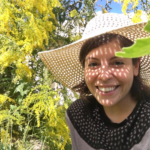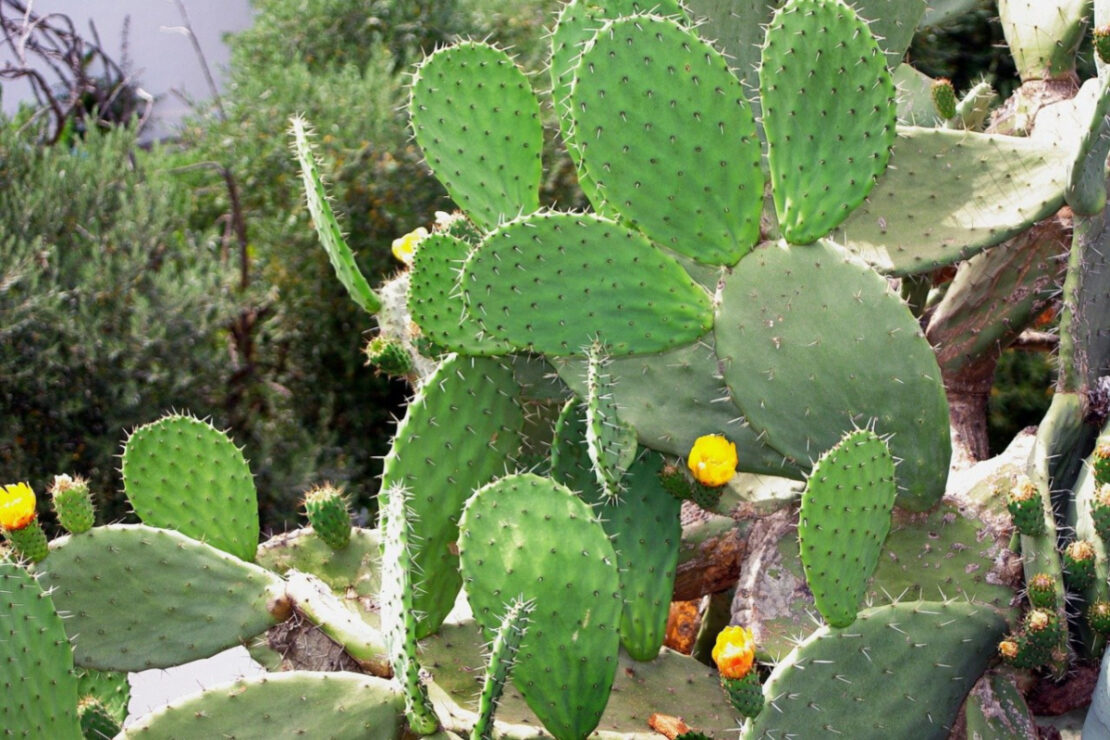
5 Herbs That Thrive in a Southwest Garden
The first step to growing a successful Southwest garden is appreciating the environment in which you are growing. Depending on where you live, you will have a different distribution of the resources you need to grow, like sun, water, and quality soil. In the Southwest garden, gardeners have an abundance of sun.
In the heat of a Southwest summer, super sunny conditions can be a stressor to many plants. Some plants, however, are as ready to soak up the sun as Sheryl Crow. Plants like these are the best choice for a Southwest garden as they will thrive in the sunniest spot on your plot. Here are five such herbs, in no particular order.
Tulsi (Ocimum spp.)
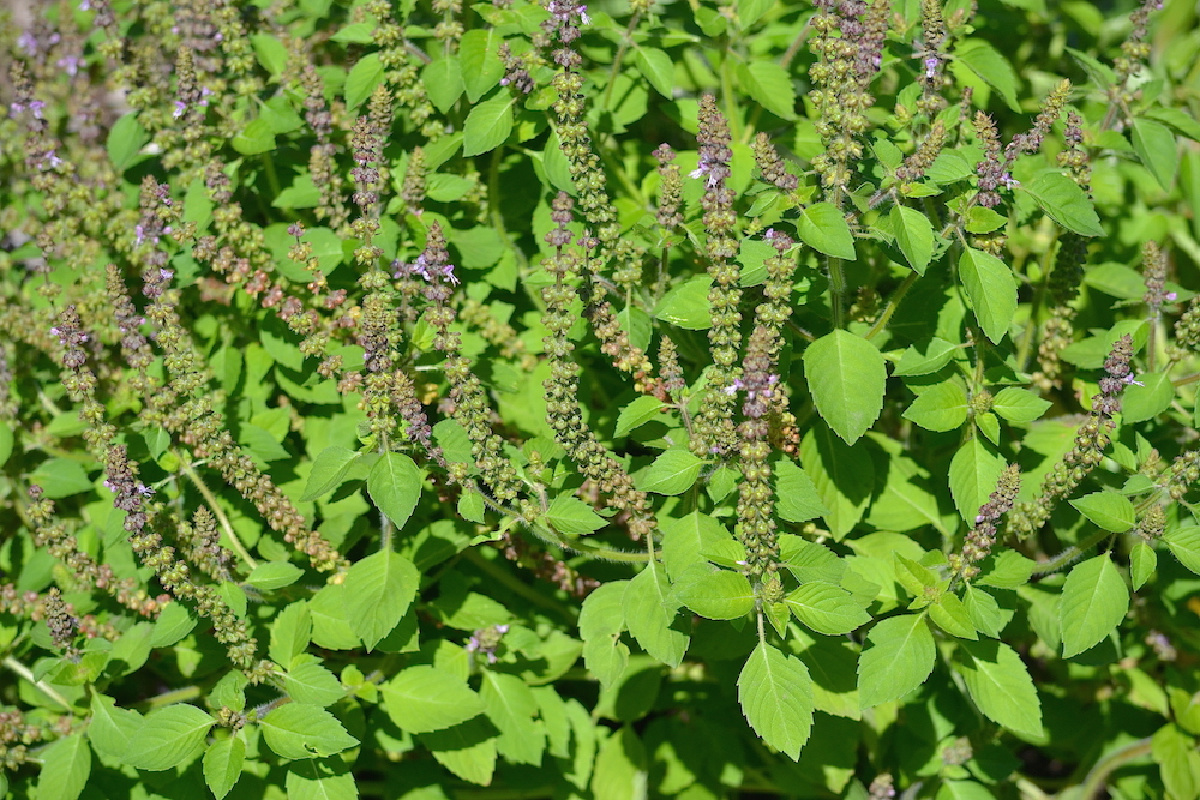
Tulsi, which is also known as holy basil, is an herb with its roots in traditional Indian medicine, known as Ayurveda. In India, there are shrines devoted to this herbal ally, and people use the plant in many ways. The herbal community recognizes Ocimum sanctum, O. tenuiflorum, and O. gratissimum as tulsi, although O. sanctum is considered a synonym of O. tenuiflorum (Engels & Brinckmann, 2013).
Tulsi can be grown from seed or plant starts. If starting from seed, sow indoors 2 or 3 weeks before the last frost. Once the danger of frost has passed, you can transplant seedlings at least 12 inches apart in a place with full sun and well-drained soil after hardening them off for a few days (Hartung, 2011).
Tulsi will need a moderate amount of watering. It is possible to grow tulsi in a pot if container gardening is more accessible. Like other basils, this plant can grow to the size of a small shrub.
In the Southwest garden, temperatures may stay warm enough that basils become woody perennials. Prolong the life of this plant by pinching off flower heads regularly; the flowers are lovely and make a fragrant bouquet for the home. For a delightfully invigorating drink, place flower heads in room temperature water to infuse and then serve as-is or on ice.
Harvest leaves throughout the growing cycle. You can use them fresh or lay flat to dry.
Tulsi is an invigorating herbal ally. This plant supports the body’s ability to handle the effects of everyday stress, has antioxidant action, and is antibacterial, anti-viral, and antifungal (Cohen, 2014). It’s a good plant to have around. Made into teas, tinctures, or syrups, tulsi is a delight to the senses in any form. Learn more in 7 Ways to Use Tulsi Everyday.
Rosemary (Salvia rosmarinus, formerly Rosmarinus officinalis)
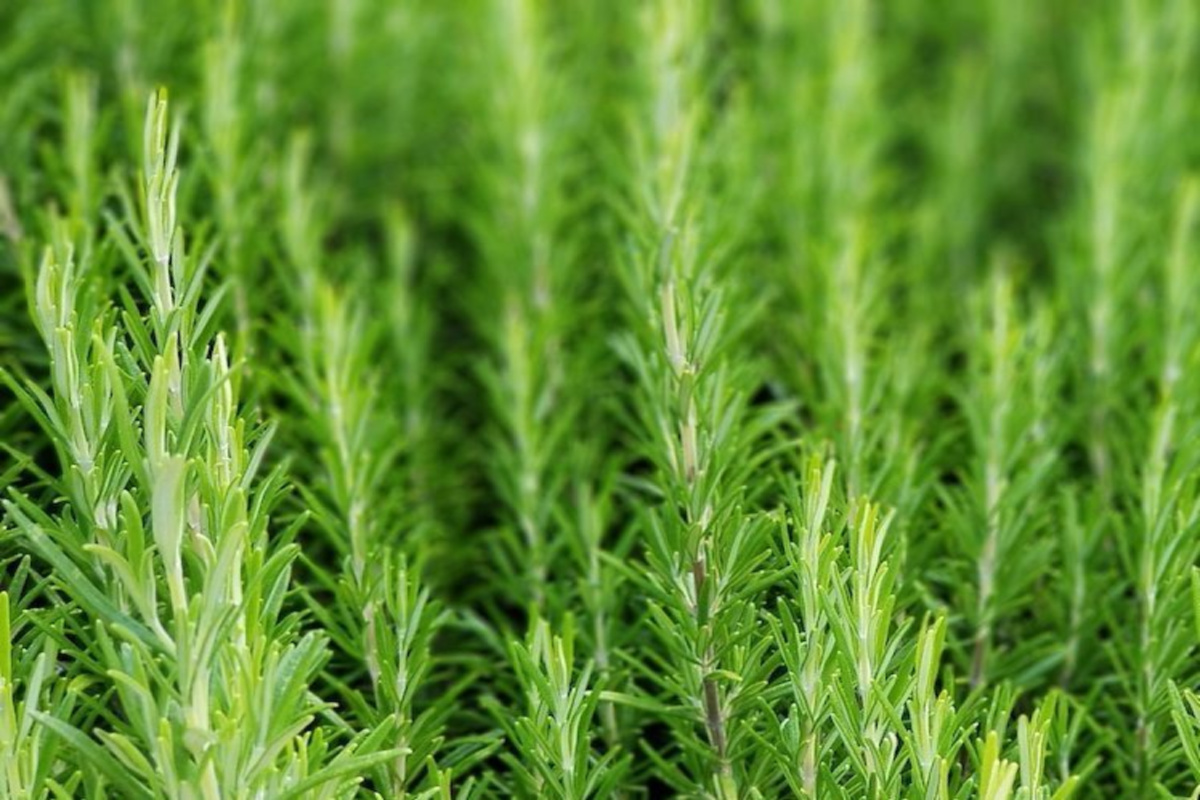
Rosemary is another excellent choice when planting a Southwest garden. Hailing from the Mediterranean, this plant can take the hottest, sunniest spot in a garden. While this plant can be grown from seed, the seedlings are difficult to establish in the garden due to their slow growth rate (Hartung, 2011). It’s best to propagate cuttings from an established plant or to purchase starts, which are available in a range of sizes.
When picking a spot in the garden, it’s important to understand that rosemary is a perennial in frost-free warm climates and will live in its chosen space for many seasons. This longevity means it has the potential to change the landscape over time. As it grows, it could create shade for other plants. This is something to be aware of, whether that shade is desirable or not. With the potential to be a medium-sized shrub, regular pruning is required to encourage growth at first and then contain growth in maturity.
Rosemary needs well-drained soil whether in the garden or in a pot. Amend soil with sand to assist with drainage when and where it is needed. When watering rosemary, adequately wet the soil. Then, allow it to fully dry before watering again. This watering schedule is an important thing to consider when choosing this plant’s garden neighbors.
Harvest the leaves when the plant is pruned, or as needed. Use them fresh, lay flat to dry, or freeze to preserve. As with all herbs, it is important to store rosemary in an airtight container, away from light.
This plant is used by different cultures to make invigorating antioxidant-rich teas, wines, tinctures, vinegar, and oil preparations (Al-Sereiti et al., 1999). An anti-inflammatory, circulatory stimulant, rosemary makes an excellent addition to bath tea. Rosemary is also used to improve the memory.
When you’re ready to use your homegrown rosemary, check out DIY Rosemary Memory Elixir and How to Make Your Own Fresh Rosemary Wreath.
Hollyhock (Althaea rosea)
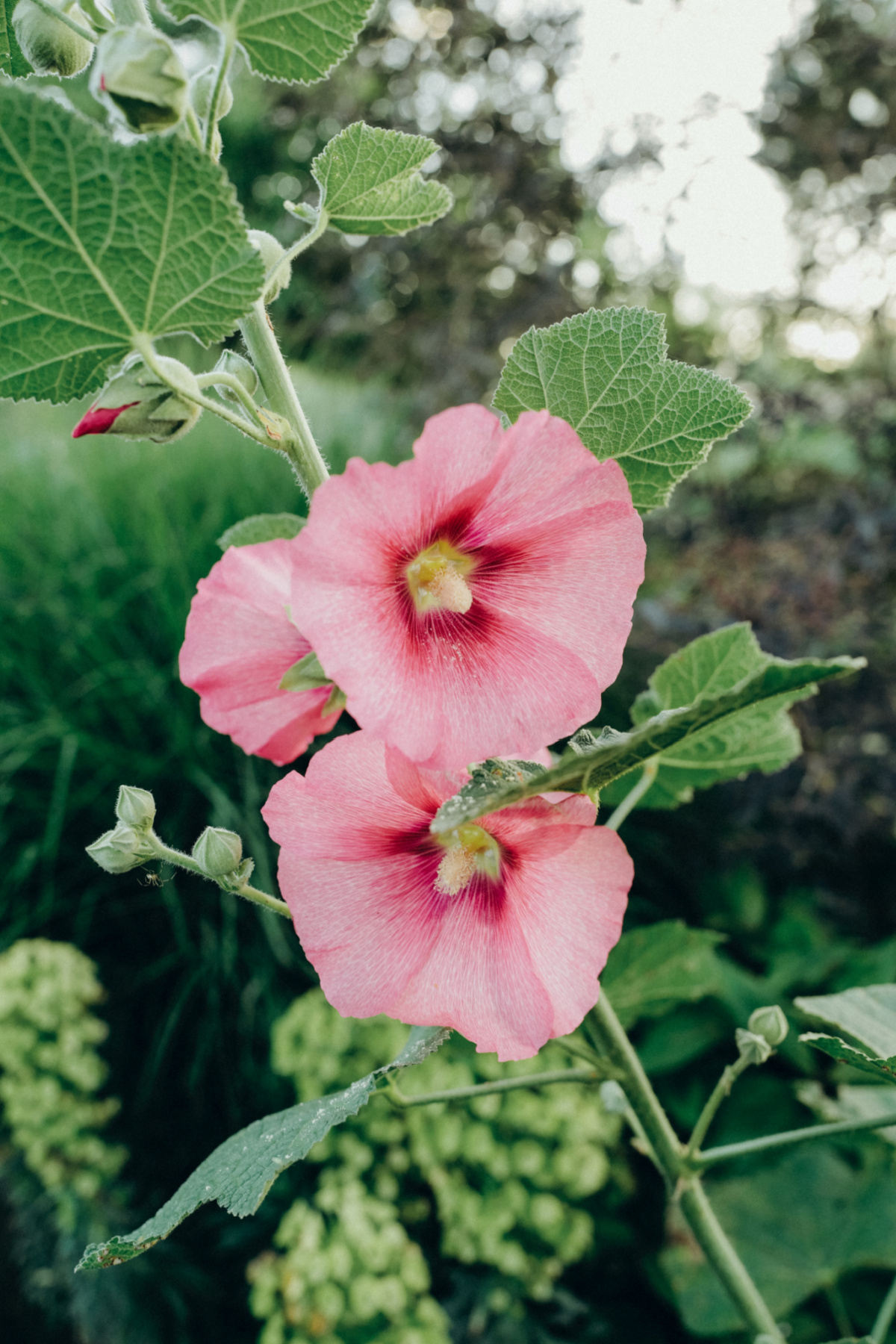
Hollyhock is a member of the mallow (Malvaceae) family that is well-suited for the sunny Southwest garden. This showy annual is a star, with stalks growing taller than the average gardener, and producing clusters of large flowers in a range of tones from white to burgundy. Even more impressive is the fact that the leaves, flowers, and roots can all be harvested and used.
In the Southwest garden, hollyhock can be sown from seed in the fall. The short winter will stratify the seeds, and they will be ready to sprout when spring arrives. If sowing in the spring, place seeds in the freezer for a few weeks before sowing to increase germination rates (Hartung, 2011). Hollyhock prefers a rich or loamy soil and a moderate amount of watering. Planting along a wall offers the stalks greater support in windy areas.
The life of a hollyhock is prolonged by continuously harvesting the flowers over the growing season. By preventing the plant from producing seeds, it will continue to produce flowers for a much longer period of time. At the end of the season, leave the flowers on the plant to allow the seed to mature. The seeds can easily be collected and saved for the next year. Once the seed is collected, the stalks can be cut down and the roots dug up.
Those beautiful flower petals can be added to salads or dried and used to make teas. The leaves can be harvested throughout the season and used fresh or dried for making tea or washes. At the end of the season, you can harvest the roots and use them in the same ways you might use marshmallow roots. Like other members of the mallow family, hollyhock helps to soothe tissues and contributes moisture to the internal environment (Fahamiya et al., 2016).
For more, see 5 Ways to Use Hollyhock in Your Materia Medica.
Prickly pear (Opuntia spp.)
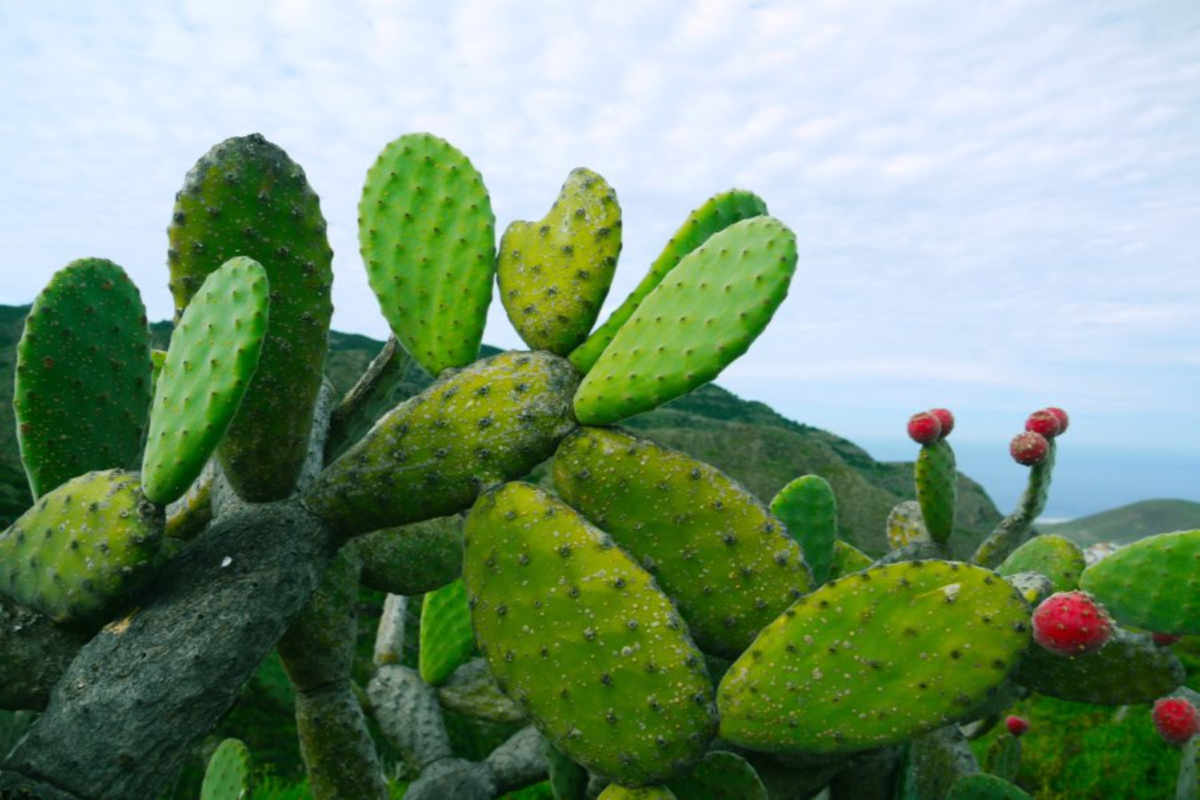
Prickly pear is native to the American southwest making it a natural choice for the Southwest garden. This cactus has a long history of relationship with peoples of the Sonoran and Chihuahuan deserts and remains a strong ally for people who live in this area. This plant has a strong presence in the garden with brightly-colored blooms, ranging from yellow to pink, and thick succulent pads.
You’ll need to get a starter for your prickly pear, as seedlings must be nurtured indoors for a year before they can be moved outdoors. It is possible to root a pad cutting from this plant. To do this, you’ll want to let the pad dry out and become thirsty before placing it in sandy soil to root (Westover, 2018).
Keep the soil evenly moist to encourage new root growth. The new roots will bring water to the dehydrated pad and it will begin to plump back up. Once the pad looks succulent again the plant can be moved to its permanent home. Prickly pear can live in the ground or in a pot with well-drained sandy soil. Water regularly and allow time between waterings for the soil to completely dry out.
Take care in harvesting this plant, as even spineless varieties may still produce glochids ( smaller prickly hairs) from the nodes. Always wear thick gloves when handling prickly pear and use tools to snip fruits or pads from the plant. Use gloves and a knife to remove thorny parts before use or preparation. Both fruits and pads can be stored in the refrigerator for about a week.
Opuntia fruits are high in antioxidants, and the juice is used to make beverages, jellys, and other culinary delights. The pads can be cut open and applied to sunburned skin to soothe and aid the body in repair of the damaged tissue. Additionally, the young pads are good for calming gastrointestinal complaints (Shirazinia et al., 2019). Cubed and cooked as a vegetable, these make a fun addition to any meal.
Hibiscus (Hibiscus sabdariffa)
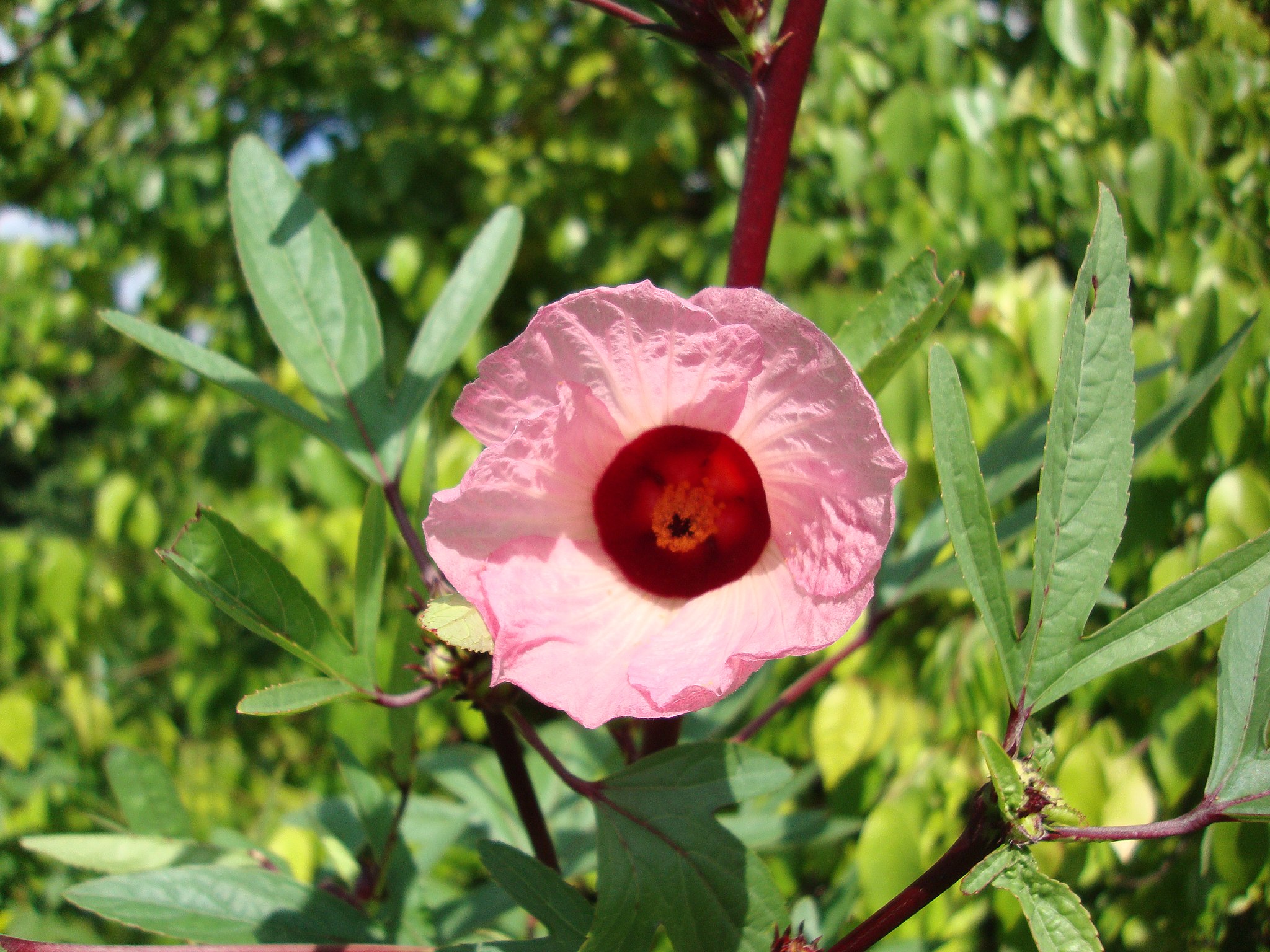
Hibiscus is the final of our five herbs. Native to Africa and India, this plant is used today by people in cultures all around the world. This plant loves the sun, can add visual height to a bed of flowering annuals, and makes a beautiful display when fruiting. This hibiscus is a different species than some of the showier hibiscus varieties. Ensuring you have the right species of starter plant or seeds is important.
Hibiscus is an annual plant and seeds can be directly sown in April. Plant in well-draining soil and water regularly. These plants can grow up to 6 feet tall, and have a long growing season, as they do not usually fruit until the fall (UF/IFAS Gardening Solutions, n.d.). The young leaves are tender and edible, with a tart green apple flavor.
The calyces (sepals) can be harvested and used fresh or dried for preservation. If drying, remove the calyx or outer flesh from the hard seedpod in the center, then lay the calyx flat and turn every few days until completely dry.
The calyces are high in vitamin C, and are often used to make a cooling infusion with a tart almost cranberry-like flavor profile. Hibiscus has a diuretic effect and has been shown to help lower blood pressure in mild cases of hypertension. It also carries both moistening and astringent properties. They can also be eaten fresh, prepared in jellys, or made into syrups (Duke, 1998).
Learn more in Hibiscus, Herbs we Love for Summer.
In Closing,
These sun-worshipping plants will make beautiful and useful additions to any Southwest garden. The perennials may assist in shifting the resources of your space and adding shade to shelter neighbors as they grow. Annuals will add seasonal splashes of color and variety to your garden palate. Growth is possible in even the most extreme conditions and plants prove this possible time and time again.
For more,
7 Best Plants for a Beginner’s Herb Garden
12 Permaculture Principles to Use When Planning Your Herb Garden
5 Herb Garden Books to Inspire Your Next Botanical Garden
How to Grow Culinary Herbs Indoors During Winter
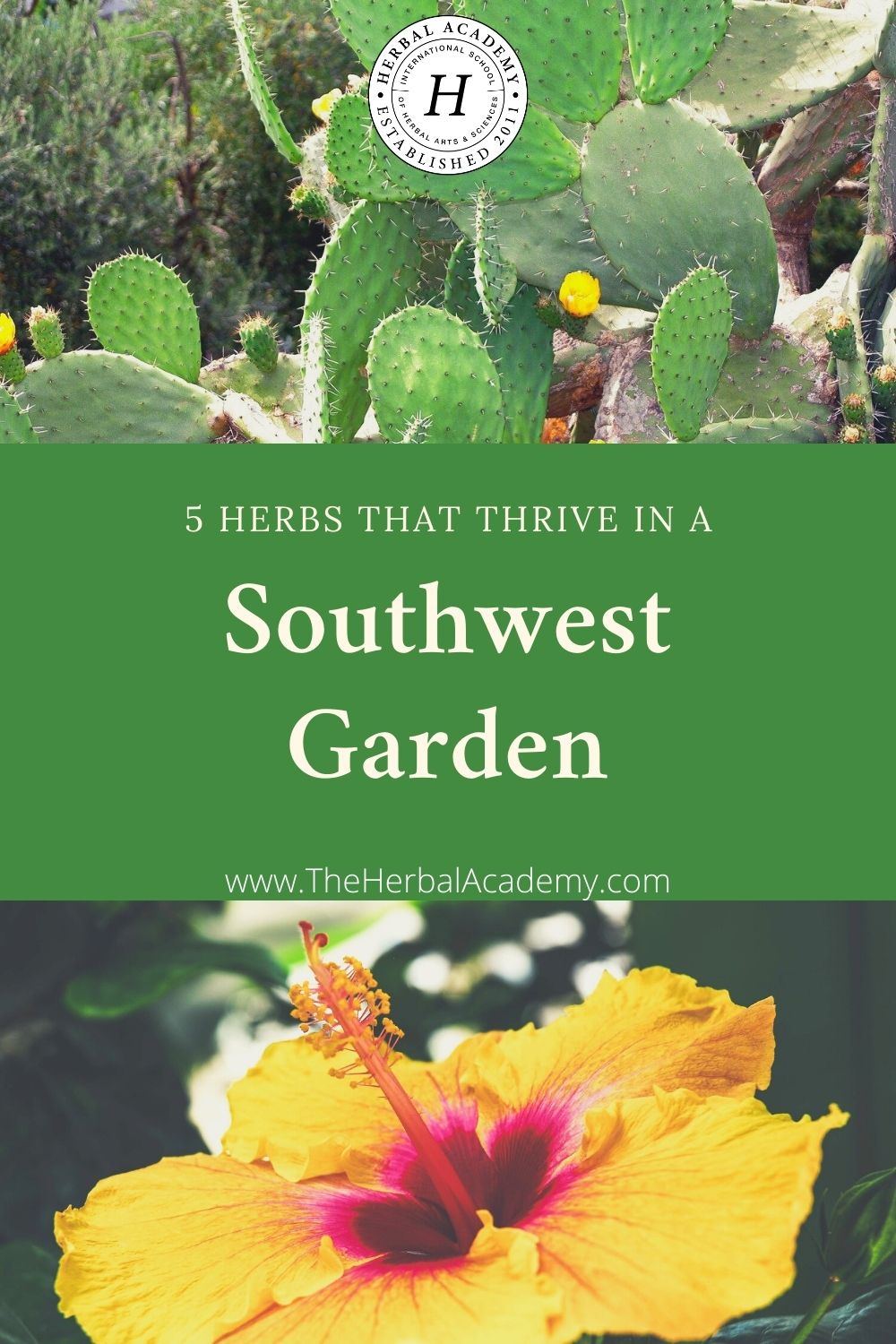
RESOURCES
Al-Sereiti, M. R., Abu-Amer, K. M., & Sen, P. (1999). Pharmacology of rosemary (Rosmarinus officinalis Linn.) and its therapeutic potentials. Indian Journal of Experimental Biology, 37, 124-130. http://nopr.niscair.res.in/bitstream/123456789/18973/1/IJEB%2037%282%29%20124-130.pdf
Cohen, M. (2014). Tulsi – Ocimum sanctum: A herb for all reasons. Journal of Ayurveda and Integrative Medicine, 5(4), 251–259.
Duke, J.A. (1998). Hibiscus sabdariffa L. Hibiscus sabdariffa. [Electronic publication] https://www.hort.purdue.edu/newcrop/duke_energy/Hibiscus_sabdariffa.html
Engels, G., & Brinckmann, J. (2013). Holy basil. HerbalGram, 98, 1-6. Retrieved from http://cms.herbalgram.org/herbalgram/issue98/hg98herbpro-holybasil.html?ts=1601995043
Fahamiya, N., Shiffa, M., & Aslam, M. (2016). A comprehensive review on Althea rosea Linn. Indo American Journal of Pharmaceutical Research, 6(11), 6888-6894.
Hartung, T. (2011). Homegrown herbs: A complete guide to growing, using, and enjoying more than 100 herbs. Storey Publishing: North Adams, MA.
Shirazinia, R., Reza Askari, V., Rakhshandeh, H., Sahebkar, A., Rezaie Kehkhaie, A., & Baradaran Rahimi, V. (2019). Opuntia dillenii: A forgotten plant with promising pharmacological future. Journal of Pharmacopuncture, 22(1), 16–27.
UF/IFAS Gardening Solutions (n.d.). Roselle. [Online Database] https://gardeningsolutions.ifas.ufl.edu/plants/edibles/vegetables/roselle.html
Westover, J. (2018, December 15). How to grow a cutting from prickly pear cactus. [Website] https://homeguides.sfgate.com/grow-cutting-prickly-pear-cactus-25018.html

